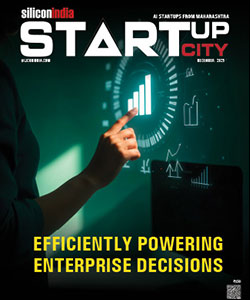Startups Reduce Cash Burn Rate to Survive
![]()
BENGALURU: Negative cash flow affects startups. Thus, startups now plan to preserve cash in hand in order to survive their business. To do so, they are focusing on ‘unit economics’ where reducing maximum cash burn rate is the aim, reports Madhav Chanchani of Economic Times.
Cash burn implies the rate at which a startup uses its capital to run its day-to-day operation. This helps to predict how soon a company may go bankrupt or penny less. Funding equally stands uncertain from angel investors and thus, entrepreneurs now leads focus on developing core values of their startup, than expanding it geographically.
Cash burn rate, standing parallel to the idea of negative cash flow was used as a measure by startups to outclass competitors, win market share, and ultimately pave way to profit. This was further pumped by a class of investors who contributed venture funds to hedge funds, in order to encourage million dollar organizations.
Presently, two most valuable Indian startups Flipkart and Snapdeal are counting cash burn rate as a major concern where they have reduced their individual rates up to one third, recalls an official of the startup industry. Flipkart with its total worth exceeding $15 bn (1 lakh cr) has cut burn rates from $80-$100 mn per month in 2015, to $50 mn now. On the other hand, for Snapdeal the cut down ranges to 40 percent in comparison to last year, as revealed by one of its investor.
Flipkart and Snapdeal, known for three rounds of funding within one year, limited to only a single funding in 2015. Startups smaller in size, are witnessing worst of state, as lack of both funds and funding leads them to either shut their business or firing large number of employees.
Experts predict that startups will put a pause in spending money for expansion of business and lead focus to produce sustainable products that can yield them financial returns. “Costs will have to be cut in areas like salaries, duplication of work within departments and reducing cost of operations” suggests Sreedhar Prasad, a partner focusing on e-commerce and startups at KPMG.
If recalled, then at the first half of 2015 food delivery startups like Zomato, TinyOwl or grocery delivery startups like Grofers and PepperTap cut their business operations in small towns, with the motive to reduce cost of operation. Others are using money mostly to build long term infrastructure that benefits their business.
According to sources, budget hotel aggregator Oyo experienced burn rates slope from $8 mn, to $4 mn during the last quarter of 2015. The need to preserve cash in hand and the efforts to cut expansion of business, both contribute to reduce burn rates.
Online retailers chopped on discounts and offers in e-wallets to shrink burn rates and will continue to dig more ways of saving money. But it’s again the nature of competition and market that is going to determine the method in which these startups modify their burn rates. For example, U.S. based Amazon will surely grow before the festive session beginning from August and to stay in par, competitors like Flipkart and Snapdeal might start spending more.
KPMG’s Prasad elaborates, “In order to drive profitability, big players will start asking ecosystem partners who are making money – payment firms, last mile delivery companies and cataloguers–to start sharing the costs and risks.”
Read Also: PM To Launch Start-Up Scheme For SCs/STs


.jpg)
.jpg)